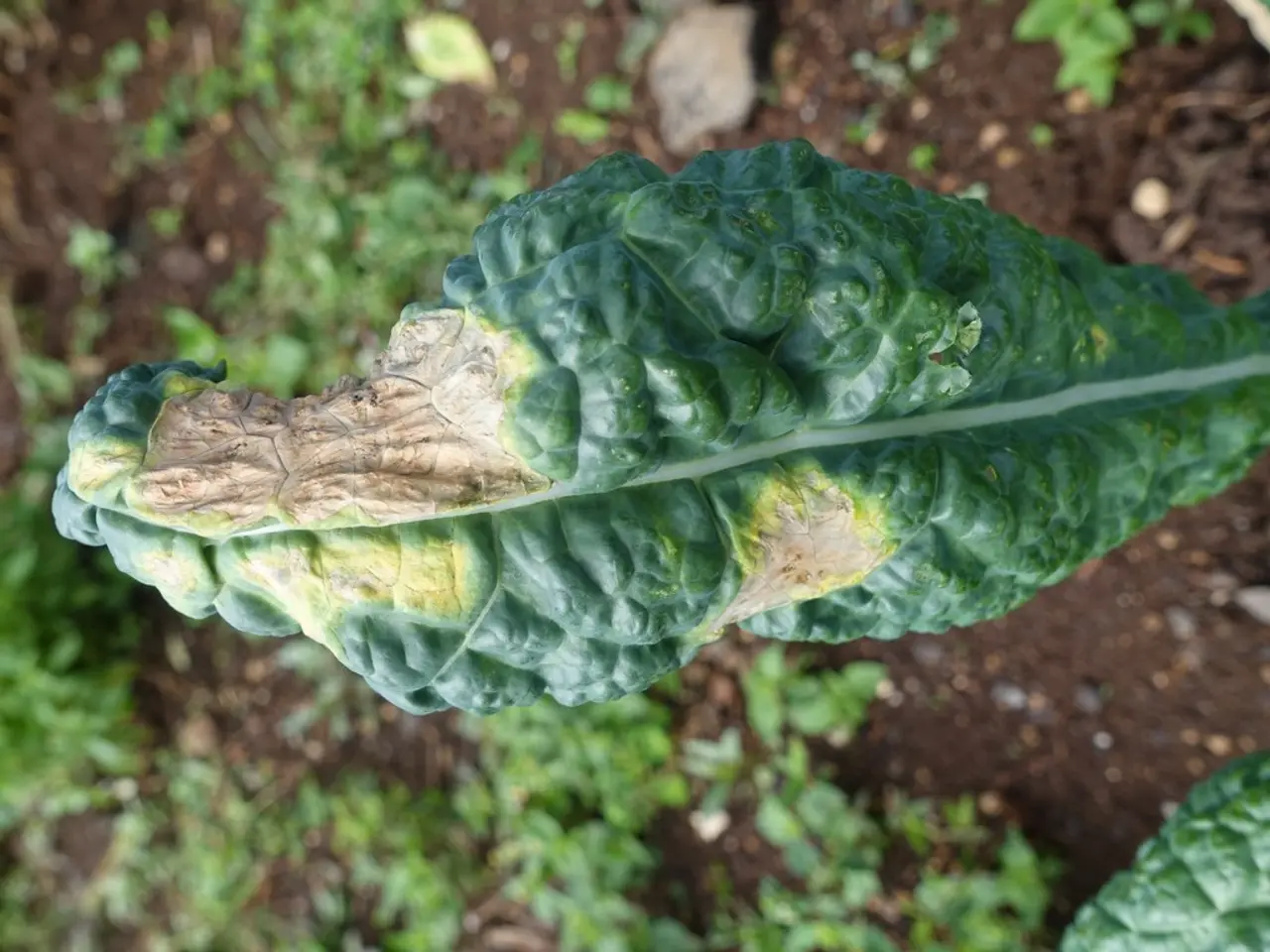Plant Leaf Holes: Common Triggers & Solutions Explored
In the vibrant world of gardening, holes in plant leaves can be a source of concern for many enthusiasts. This article aims to shed light on the various causes of such damage and offer practical solutions to protect your precious plants.
Firstly, it's essential to understand that not all garden marauders are insects. Slugs, for instance, are mollusks that favour shady areas and feed on low-lying vegetation and decaying matter. Squash bugs, on the other hand, are insects that lay bronze-colored eggs in clusters on leaves. Slugs leave shiny trails on leaves that sparkle in the sun, while squash bugs are known for their brownish-yellow bodies and black triangular markings.
Insects like beetles, such as Japanese beetles, feed between leaf veins, leaving a lacy or skeletonized appearance on the leaves. Grasshoppers, on the other hand, feed on leaves, stems, flowers, fruits, and seed heads, leaving irregular holes within the leaf or on leaf edges. Earwigs favor herbs, vegetable fruits, and leafy vegetables and often leave ragged looking edges. Caterpillars, the larval stage of butterflies and moths, make random holes, often on leaf edges, and their droppings, or frass, can be seen on the leaves.
Whiteflies are tiny, white-winged insects that feed in groups and flutter up when disturbed. They are often found on the undersides of leaves and can cause yellowing and curling of the leaves. To combat these soft-bodied insects, Neem oil (azadarachtin) is an effective insecticide.
Leaf miners are fly larvae that feed on the inside of leaves, causing tan blotches that wind across a leaf. These pests can be particularly harmful to fruit trees and ornamental cherry trees.
A common issue affecting fruit trees and ornamental cherry trees is shot-hole disease, caused by a bacterium-fungus. This disease can cause holes in leaves, but healthy trees can usually recover without intervention, provided that dead leaves are picked up and removed.
Vigilance in the garden is key to staying one step ahead of garden marauders. Regularly inspecting garden plants for damage and/or pests is important for preventing disease, insect, or wildlife activity. To identify the specific pests causing the damage, inspect the plants closely for visible pests, use identification guides or apps specialized in local fauna, and consider collecting samples for expert analysis. Local gardening clubs, agricultural extension services, or citizen science projects can assist in identification by comparing findings with regional species known to damage foliage.
Comparing the feeding injury with the type of pests common to a particular plant can help determine the cause of leaf damage. For instance, beetles, such as Japanese beetles, leave a lacy or skeletonized appearance on the leaves, while slugs and caterpillars create smooth-edged holes.
Liz Baessler, a Senior Editor at Gardening Know How with a background in English and a passion for gardening, emphasizes the importance of understanding the various causes of leaf damage and adopting proactive measures to protect your garden. With this guide, you are now better equipped to identify and combat the garden marauders that may be causing holes in your plant leaves. Happy gardening!
Read also:
- Impact of Alcohol on the Human Body: Nine Aspects of Health Alteration Due to Alcohol Consumption
- Understanding the Concept of Obesity
- Tough choices on August 13, 2025 for those born under Aquarius? Consider the advantages and disadvantages to gain guidance
- Microbiome's Impact on Emotional States, Judgement, and Mental Health Conditions







